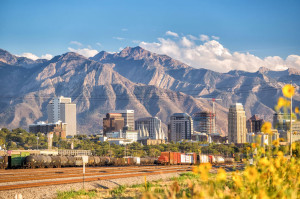More on the proposed inland port in Salt Lake City
 When it comes to the creation of commercial areas in Utah, sometimes navigating through the government can create some bumps along the way. That is certainly true of the inland port in Salt Lake City and its governing body, the Utah Inland Port Authority.
When it comes to the creation of commercial areas in Utah, sometimes navigating through the government can create some bumps along the way. That is certainly true of the inland port in Salt Lake City and its governing body, the Utah Inland Port Authority.
This project which has been steadily on the go for years is now reaching its final stages, but not without some controversy. It’s a good, writ-large example for districts on how wider projects get approved throughout the Beehive State.
First, a little bit about the project. The proposed global inland port is on land close to the Salt Lake City airport. Instead of operating as a business port normally would —with docks, railway stations and other types of shipping and receiving areas — this port is more virtual. It still requires land, but more for a gateway hub for the logistics to get goods and services to other locations.
There are also plans to create what the UIPA calls “satellite ports.” These are split into four Utah regions so freight and transportation can be made smoother as part of the port’s mission. The authority also writes that the satellite ports are “intended to help rural areas of the state position themselves to participate in — and grow because of — the new market economy that will create better jobs for the future of the Wasatch Front.”
There are several factors that have divided opinions between lawmakers and residents of Salt Lake City. Here’s a look at the major two reasons the inland port has met resistance.
The rights of the Authority
In a state where governmental rule is often questioned — even by the legislators themselves — that hasn’t been an exception with the UIPA. There have been years of discussion on who would be on the Authority and who would have the checks and balances to approve business dealings on that board.
The way it has resolved so far is this: the state Legislature will be in control of most seats on the board, with the state Governor and Salt Like City Council also having a say on who’s appointed. The board is also considerably smaller: shrinking from 11 persons to 8.
The idea was for Salt Lake City to have less control over the board, especially so it would work to serve the entire state and not just the major urban center.
Environmental impact
Activists around the state were concerned about the Port Authority’s usage of land for the logistics center, including how it would impact wetlands around that area as well as the other communities near it, including Magna and West Valley City.
What has been resolved here concerns the tax revenue the Authority will receive. The plan to restructure the governing body also includes a rule that two-thirds of the revenue would go toward a combination of traffic and environmental studies as well as actual mitigation of the environmental impacts of the project.
The inland port is one of several projects that were touched upon by this most recent legislative session that we will be keeping tabs on, to see how it may impact all of those who live in the districts.
To find out more about how we can help your district, go to our website at uasd.org.






